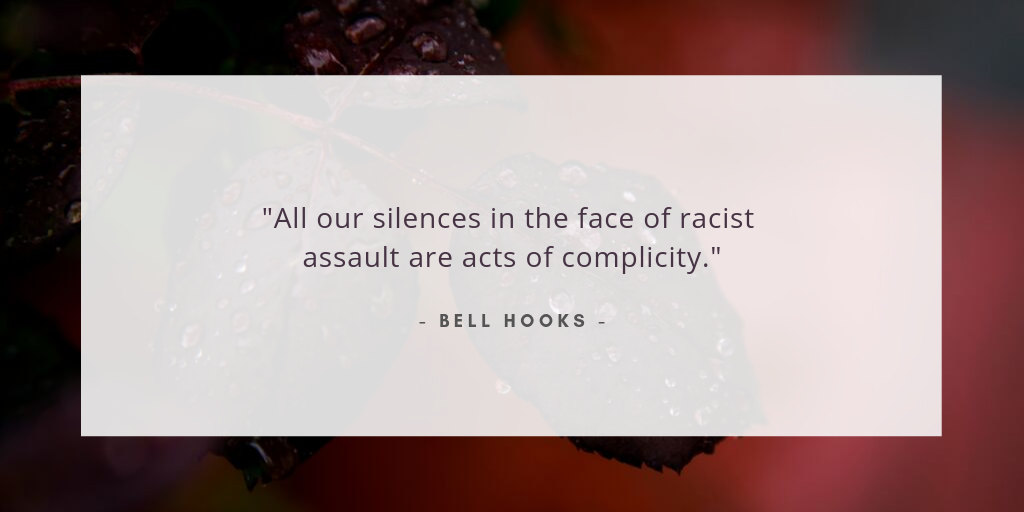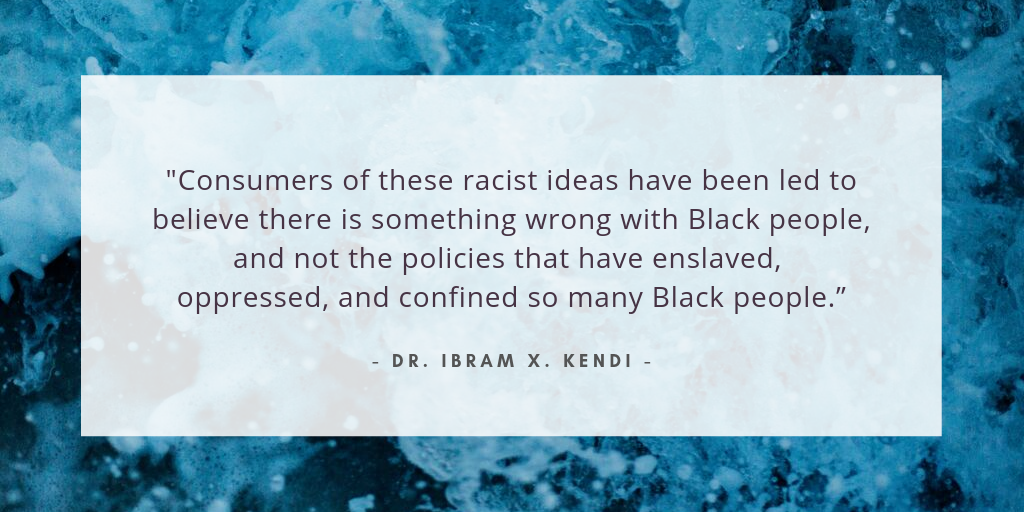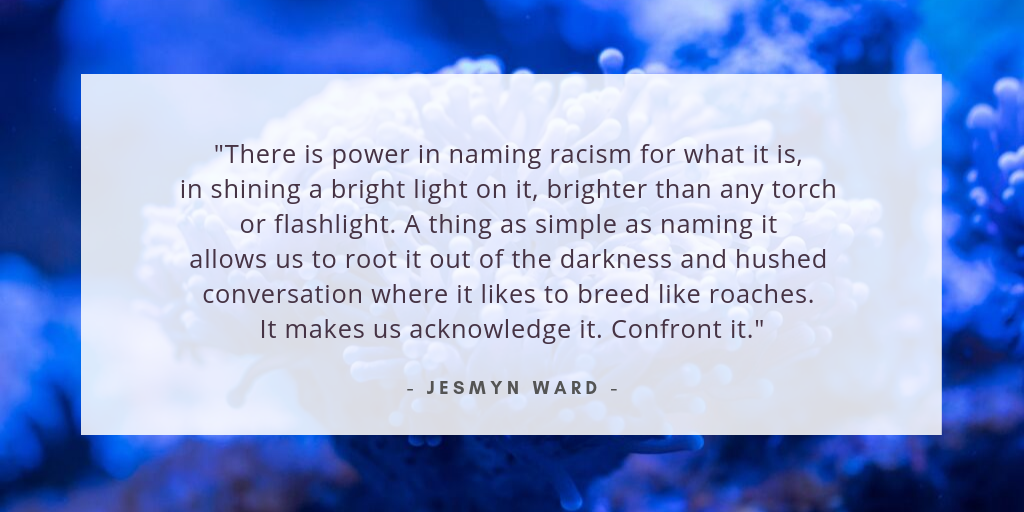The term “not racist” is meaningless.
Calling yourself “not racist” makes you part of the problem rather than part of the solution.
“[Claiming to be ‘not racist’] signifies neutrality: ‘I am not a racist, but neither am I against it.’ But there is no neutrality in the racism struggle. The opposite of ‘racist’ isn’t ‘not racist.’ It is antiracist.” – Dr. Ibram X. Kendi, director of the Antiracist Research and Policy Center at American University
To be “not racist” is to be neutral, rest on one’s laurels, and accept inaction. To be “not racist” is to fail to evolve or question one’s own thoughts, actions, and feelings.
As student affairs professionals, we have the potential to influence our field and our respective institutions. Thus, we must reject neutrality on issues of race and transform from “not racist” neutrality to anti-racist action.

So how can student affairs professionals be anti-racist? I have had the opportunity to direct an African American cultural center, serve as an assistant dean of students where I oversee diversity and inclusion, and instruct courses related to race and ethnicity. Along with continuous evaluation and reflection, these experiences enabled me to explore what being anti-racist entails for a student affairs professional.
Here are three things that I believe are critical to begin your journey toward becoming anti-racist.
3 Vital Behaviors
1. Acknowledge the role of white supremacy
Look at how closely many issues in higher education mirror our broader society, which is rooted in white supremacy.
Research the history of students, staff, and faculty of color by utilizing institutional data, as well as records from the library, academic departments, cultural centers, and other areas.
Research when students of color were first accepted into your institution and when faculty and staff members of color were first hired. Additionally, look for trends in recruitment and retainment for student, faculty, and staff — both then and now.
Nationwide, there is a gap in retention, graduation, and access for students of color. That means that there is a high likelihood that your institution historically failed and, perhaps, still fails to provide access to students of color, especially those in the Black and Latinx communities.

Retention and access is not just an issue for students; it remains an issue for faculty and staff of color as well.
So, the first step to working towards being anti-racist is to acknowledge that white supremacy influences the states of our institutions today. Acknowledge that, in many ways, our institutions serve as gatekeepers that denied access from the day they were founded and still continue to lag.
2. Address and disrupt racism yourself
Students, staff, and faculty of color are often already forced to assume additional burdens related to diversity and inclusion work, including advising, mentoring, and counseling other students of color. They should not be forced to disrupt racism at your institution.
Black students have been routinely referred to me for mentoring, advising, or counseling by faculty, staff, and administrators under the assumption that I could “relate” to them better because of our shared race.
In each of these cases, the problem related directly to an issue of racism or racial aggression. Exasperated one day, I said to a colleague (a white woman who had referred three black students to me previously), “How would you respond if I referred every student who is a woman to you? Because that’s what you’re doing to me.”
Prior to referring issues of racism to a non-white colleague, consider your role and responsibilities as an anti-racist. A “not racist” person will simply view racism as wrong; an anti-racist person will agree that racism is wrong and will develop skills to address racism. They’ll take action to address and disrupt the racism that affects their institutions.

You have the power to gather information about what occurred, to build a rapport and empathize with the individual who approached you, and to begin to develop a plan to attack and disrupt racism and the systems that uphold it. Seek guidance after you have done the preliminary research and fact-gathering, not before.
Anti-racism needs to be active, constant, and continuous. It requires you to always adapt and develop skills to dismantle racism.
It is imperative that student affairs professionals develop cross-racial skills and understanding. My colleagues who referred their Black students to me wanted to be neutral in the racism struggle. They wanted me to take on that struggle, which showed that they knew an issue existed but did not want to address it themselves.
White student affairs professionals shouldn’t rely on their non-white colleagues to take up the mantle of breaking down racial inequality.
They must learn about the history of oppression that affects our non-white students, staff, faculty, and administration. Then, they must develop empathy and the skills to talk to and build trust with students of color. Plus, they must support colleagues of color by being willing to call out their white colleagues and to stand up to demand that changes occur at their institutions.
3. Avoid white fragility, white solidarity, white tears, and white domination
White student affairs professionals need to avoid falling victim to “white fragility”, a term coined by white anti-racist educator Robin DiAngelo. She says that good intentions don’t matter.
“[White fragility is] a state in which even a minimum amount of racial stress becomes intolerable, triggering a range of defensive moves. These moves include the outward display of emotions such as anger, fear, and guilt, and behaviors such as argumentation, silence, and leaving the stress-inducing situation. These behaviors, in turn, function to reinstate white racial equilibrium.”
To Diangelo, white fragility is a form of racial bullying.
To be anti-racist, student affairs professionals must address their white fragility and avoid white solidarity, white tears, and white domination.
Here’s what those terms mean.
White solidarity:
White solidarity is prevalent in student affairs environments. In order to keep the peace or not exacerbate issues, white colleagues often fail to call out racism, aggression, prejudices, or biases, or they will defend their colleagues, thereby denying the experiences of a colleague of color.
Conflict is often viewed as a negative, but it can be tremendously productive. White professionals who want to be anti-racist have to be willing to call out their colleagues, especially those with whom they have a rapport. Failing to do so isolates and puts added stress on their colleagues of color.
White professionals need to be willing to call out injustice in public areas so that their colleagues of color don’t have to call out injustice after enduring it.

I have seen a great deal of white solidarity in my career. One example that stands out was a colleague’s response to the protests related to the killing of Keith Scott. The colleague made numerous racist comments related to the protesters “[needing to] pull their pants up” and “causing trouble when they should be going to school.”
Two things stand out to me regarding that incident. The first was my angry response to his words and the second was a white staff member in a position of power who tried to convince me that the colleague “didn’t mean it that way” and that I needed to consider that colleague’s point of view and feelings.
I have multiple stories of white solidarity. I have come to expect it, but, fortunately, I have also had white colleagues make efforts to break down white solidarity.
I vividly recall a meeting in which I was one of only two people of color. An administrator made numerous racist comments, and when I raised my hand to comment about how unacceptable they were, a white colleague interrupted me to say that she found those comments unacceptable. She briefly explained why, and the administrator apologized and moved forward.
This was a small action, but it is an example of how white student affairs professionals can begin shifting their mindsets from “not racist” to anti-racist.
White Tears:
White professionals might feel upset or become emotional when being called out for an aggression or injustice they perpetrated, or when learning of aggressions or injustices that are perpetrated by others. In both examples, the student affairs professional makes the situation about themselves.
It is natural to become upset after being called out for your behavior or upon learning about horrid details about racial oppression; however, white tears are a distraction from the people who are actually harmed.
By drawing attention to yourself as a white person, you are either implicitly or explicitly requesting that others in the room pay attention to you and your feelings, and the attention becomes misplaced.
If you are a white student affairs professional in the United States, you are the beneficiary of a system, culture, and a higher education institution that actively favors people of your racial identity. So, when people of color speak out about issues of injustice, don’t make the conversation about yourself, and avoid becoming defensive. Further, you must stop, listen, and reflect upon what is being said.
If you feel yourself become emotional in a potentially disruptive way, respectfully remove yourself from the situation until you have gathered yourself. Then, return and actively engage, listen, and absorb what is being shared with you.
As anti-racists, white professionals also have an obligation to prevent other white students, staff, faculty, and administration from using their emotions to distract from issues of oppression at events and programs.
White Domination/Passivity:
To be anti-racist, student affairs professionals must avoid white domination and white passivity. It’s important to not dominate conversations when non-white folx are speaking about issues of oppression. Yet, it’s also important to not be passive.
White professionals must use their privilege to affirm the voices of those who are marginalized and elevate the voices of those who need to be heard.
Additionally, white professionals cannot claim ignorance on issues of race and ethnicity. To be anti-racist, student affairs professionals must listen, then be willing to learn and address how their privileges maintain the structures of white supremacy.

White student affairs professionals cannot be “not racist”, and they can not afford to be neutral on racism. They must take action to ensure that they are understanding history and their role in the structure of white supremacy. They must also speak up on issues of diversity, inclusion, and equity and not allow white fragility to disrupt their ability to fight against the struggle of racism.
Anti-racism is not about being perfect. It is about learning, evolving, and acting.
Anti-racism shouldn’t just be aspirational. It must be obligatory for every student affairs professional.
What have you done to be intentionally anti-racist? Let us know on Twitter @themoderncampus and @MarceliusB.





